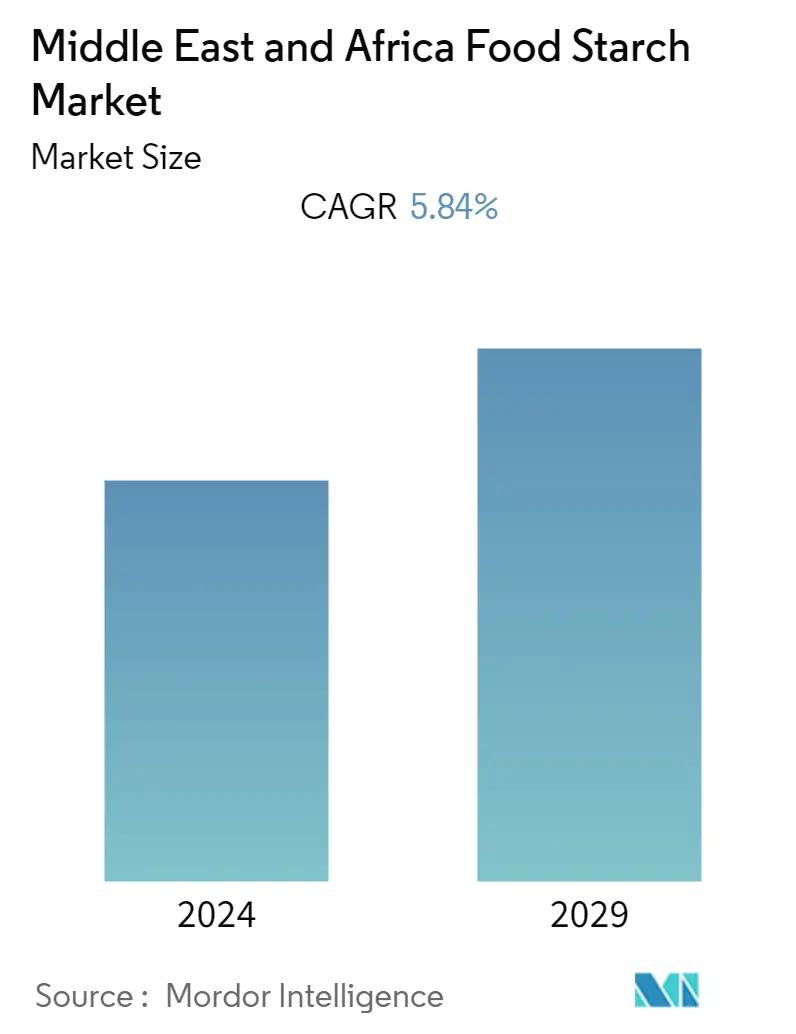Market Size of Middle East & Africa Food Starch Industry

| Study Period | 2019 - 2029 |
| Base Year For Estimation | 2023 |
| Forecast Data Period | 2024 - 2029 |
| Historical Data Period | 2019 - 2022 |
| CAGR | 5.84 % |
| Market Concentration | High |
Major Players
*Disclaimer: Major Players sorted in no particular order |
Need a report that reflects how COVID-19 has impacted this market and its growth?
MEA Food Starch Market Analysis
The Middle East & Africa food starch market is projected to register a CAGR of 5.84% during the forecast period, 2022-2027.
The food additives business has been one of the industries most affected by COVID-19, which has been characterized by an unprecedented disruption in the operation of both market forces of demand and supply, providing challenges for all market parties. Measures implemented by the government are anticipated to worsen losses in the baking industry due to the potential of supply-side interruptions since over half of all enterprises reported large-scale disruptions in their supply chains due to COVID-19. The members of the six Gulf Cooperation Council (GCC) have responded aggressively to the increasing incidence of coronavirus cases with the closures of restaurants, bars, and lounges across the region. Many farm operations that require significant amounts of labor (mainly, the production of crops for the manufacturing of natural additives majorly food starches and food flavors) were severely affected. In addition, some farmers faced other distinct challenges, such as a steep drop in crop prices like corn. Due to limited demand from major industries including food and beverages, the utilization of corn starch fell considerably. According to FAOSTAT, the yield of corn in Kuwait decreased to 130,381 hg/ha in 2020 from 207,665 hg/ha in 2019.
Over the medium term, the demand for modified starches has been increasing in parallel to the rapid development of the food industry. The candy and confectionary industry has the leading demand for modified starch. Modified starch is widely preferred by the confectionery processors in the nation as it is one of the most effective and economical ways to improve the quality of confectionery products, acting as the binder for the candy ingredients, making the candy surface shiny, eye-catching and attractive to customers.
Additionally, the rise in demand for starch produced from wheat, which is used as a stabilizing and gelling agent in several end-use sectors, is one of the major factors driving the growth of the segment. Moreover, wheat starch is used as a thickening agent by food companies in various products. Nigeria's growing appetite for Western foodstuffs, specifically pasta, noodles snacks, and baked goods derived from wheat flour, is increasing, as the country is swaying away from its traditionally rice-heavy diet.
